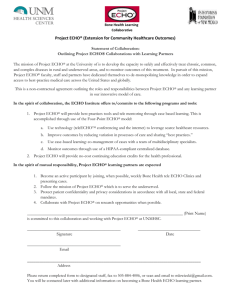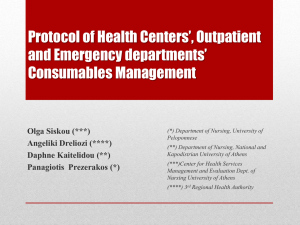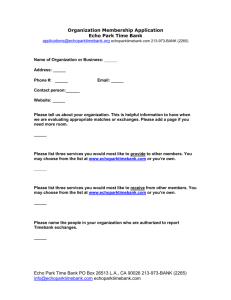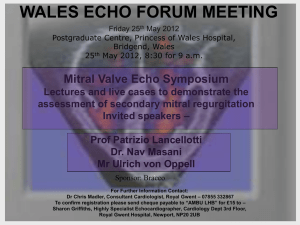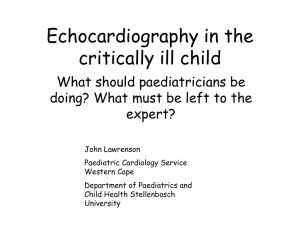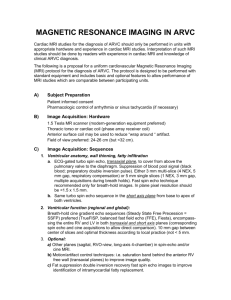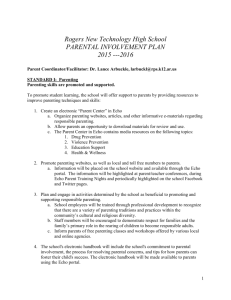Discussion of Echo Control and Measurement of TCLw for PN4352
advertisement
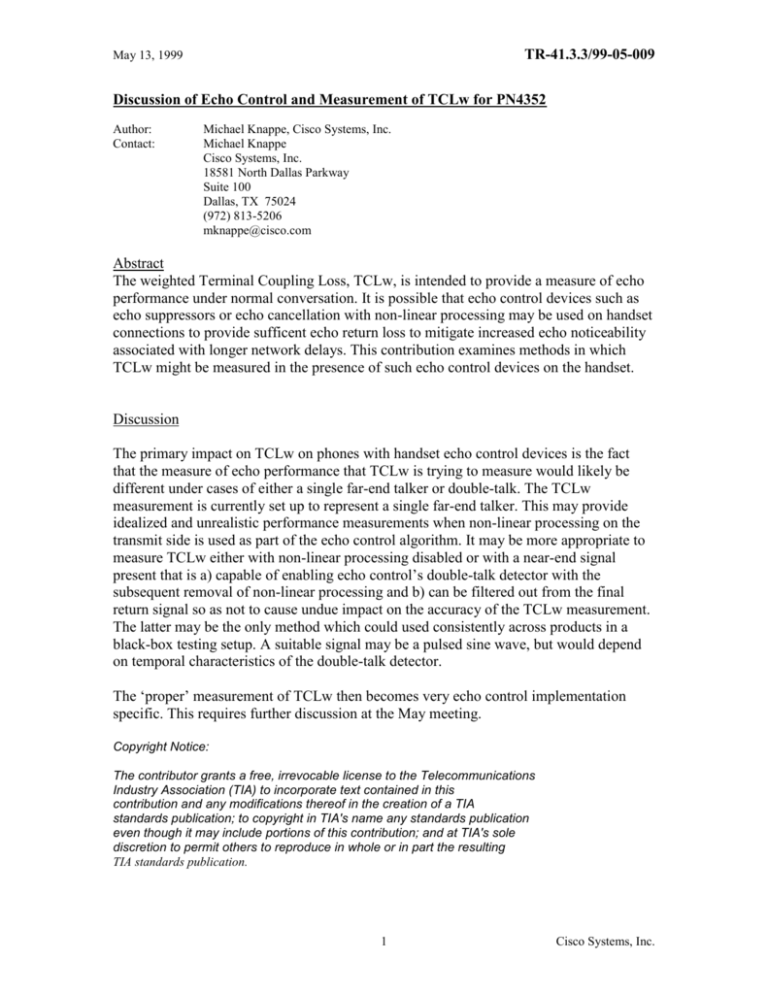
TR-41.3.3/99-05-009 May 13, 1999 Discussion of Echo Control and Measurement of TCLw for PN4352 Author: Contact: Michael Knappe, Cisco Systems, Inc. Michael Knappe Cisco Systems, Inc. 18581 North Dallas Parkway Suite 100 Dallas, TX 75024 (972) 813-5206 mknappe@cisco.com Abstract The weighted Terminal Coupling Loss, TCLw, is intended to provide a measure of echo performance under normal conversation. It is possible that echo control devices such as echo suppressors or echo cancellation with non-linear processing may be used on handset connections to provide sufficent echo return loss to mitigate increased echo noticeability associated with longer network delays. This contribution examines methods in which TCLw might be measured in the presence of such echo control devices on the handset. Discussion The primary impact on TCLw on phones with handset echo control devices is the fact that the measure of echo performance that TCLw is trying to measure would likely be different under cases of either a single far-end talker or double-talk. The TCLw measurement is currently set up to represent a single far-end talker. This may provide idealized and unrealistic performance measurements when non-linear processing on the transmit side is used as part of the echo control algorithm. It may be more appropriate to measure TCLw either with non-linear processing disabled or with a near-end signal present that is a) capable of enabling echo control’s double-talk detector with the subsequent removal of non-linear processing and b) can be filtered out from the final return signal so as not to cause undue impact on the accuracy of the TCLw measurement. The latter may be the only method which could used consistently across products in a black-box testing setup. A suitable signal may be a pulsed sine wave, but would depend on temporal characteristics of the double-talk detector. The ‘proper’ measurement of TCLw then becomes very echo control implementation specific. This requires further discussion at the May meeting. Copyright Notice: The contributor grants a free, irrevocable license to the Telecommunications Industry Association (TIA) to incorporate text contained in this contribution and any modifications thereof in the creation of a TIA standards publication; to copyright in TIA's name any standards publication even though it may include portions of this contribution; and at TIA's sole discretion to permit others to reproduce in whole or in part the resulting TIA standards publication. 1 Cisco Systems, Inc.


